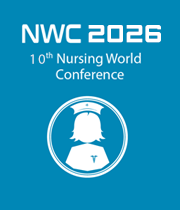HYBRID EVENT: You can participate in person at Orlando, Florida, USA or Virtually from your home or work.
Radiology And Imaging Nursing
Radiology And Imaging Nursing
For patients undergoing diagnostic imaging procedures, radiology and imaging nurses are in charge of providing care. This covers ultrasonography, computed tomography, MRIs, and radiation treatment. Besides ensuring that the radiological equipment is correctly used and maintained, they may also offer patient education, track patient reactions to tests, and monitor patient responses. Due to the possibility of interacting with patients and other healthcare professionals, radiology and imaging nurses need to be very skilled communicators. Strong technical and administrative abilities are also required. The practise of radiology and image nursing requires a licence from the state or nation where the nurse is employed.



Title : The power of presence: Investing in LVNs for lasting impact
Emma Gitomer, Houston Methodist Hospital, United States
Title : Reaching our residents: An interdisciplinary approach to educating our future providers in the art of telephone triage
Cori Brown, Childrens Hospital of Philadelphia, United States
Title : Turn the heat around: Quality improvement in malignant hyperthermia response through in-situ simulation
Ayumi S Fielden, Houston Methodist Hospital, United States
Title : PTSD and tools for nursing resilience
Renee Bauer, Indiana State University, United States
Title : Birth partnerships: Enhancing nursing care with doula support
Vera Kevic, Doulas on Bikes, Canada
Title : Shift strong: A proactive stress-physiology framework for early identification of nurse distress
Laura Hall, Colorado Mesa University, United States